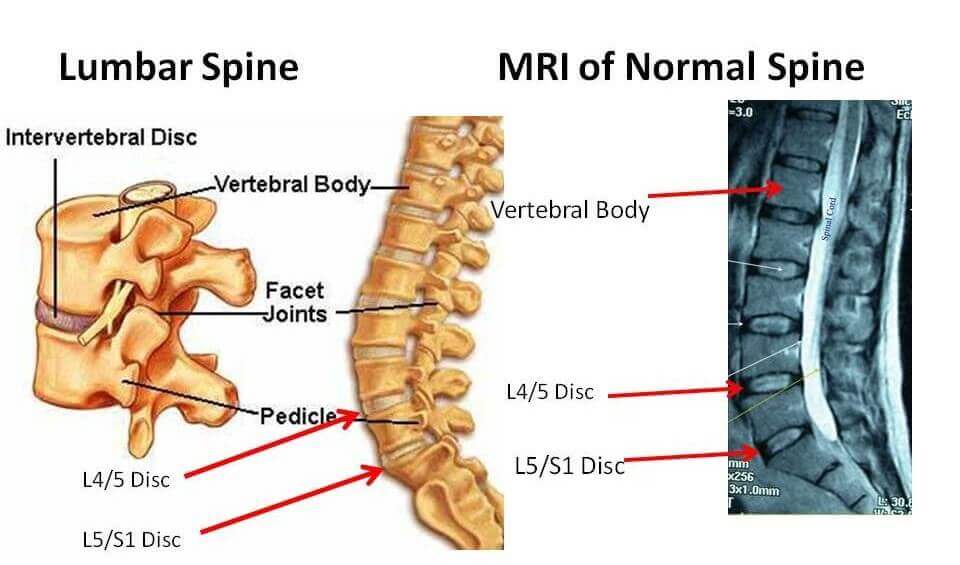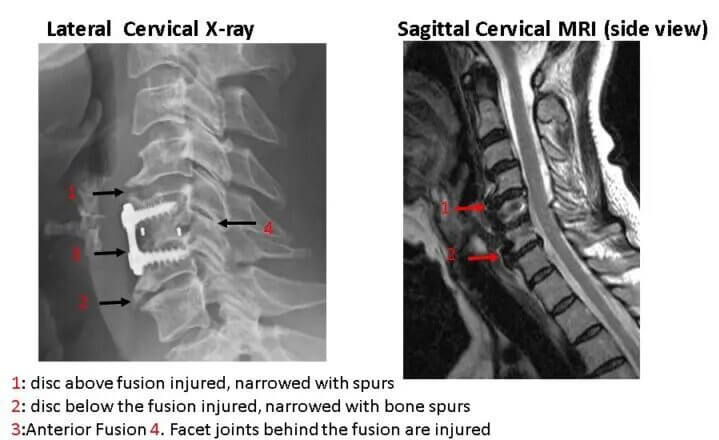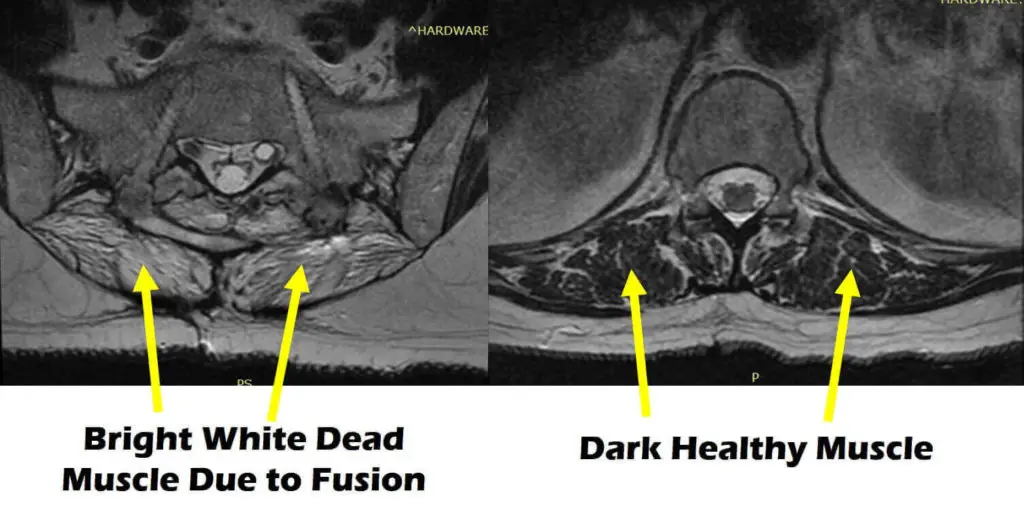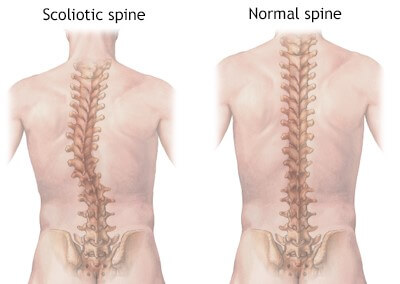Do you regret the decision of spinal fusion due to post-op spinal fusion complications? Have you heard about the risk factors causing spinal fusion complications years later? This article is all about the problems after spinal fusion surgery.
The life of a patient after spinal fusion surgery is indeed Difficult and irritating at times. This is because your spine has some tools fixed in between the normal vertebrae. Now, as with any other surgery, complications after back surgery are not uncommon either.
According to a study of spinal fusion complications, 23% of the patients had spinal fusion problems after the surgery. Out of which, 9% of the patients caught infections at the surgical site.
Unfortunately, there are a few more complications of spinal fusion surgery. The most common being the degenerative disease of the nearby spine. We will discuss them all along with the short and long-term side effects of spinal fusion. Let’s dig in:
Spinal Fusion Complications Years Later
Following are the three most common spinal fusion surgery complications years after the treatment:
Failed Spinal Fusion
We are all aware of the fact that surgeries do fail sometimes. And there are many possible factors of a spinal fusion failure that can lead to spinal fusion complications years later. For example:
- Bones failing to unite
- Hardware displacement
- Any mishap during the spinal fusion surgery

Mostly the spinal fusion problems arise after lumbar fusion when the lumbar vertebrae fail to recover properly.
Lumbar Fusion Complications
As we already mentioned, the lumbar spine (L4 and L5, precisely) is the most common site of degeneration and complications. So most (but not all) of the patients of lumbar fusion might suffer through lumbar spinal fusion issues like; lumbar decompression, decrease in movements, etc.
Adjacent Segment Degeneration (ASD)
Degenerative disc disease of the adjacent spinal cord is currently the most common spinal fusion complication. But what exactly is it?
This disease turns up when the disc and facets close to the site of fusion gets affected.

The commonest cause is the removal of a vertebral joint (as in spinal fusion surgery), which puts stress on the adjacent vertebral joints.
Now as the sequence of normal joints is upset, it will ultimately lead to complications after spinal fusion surgery.
Spinal Muscle Defect
Another Big word? Don’t worry it’s similar to ASD. Only that in this condition, the back muscles atrophy due to the fusion surgery. But mind you! It is another common cause of complications of spinal fusion.

Now, why do the muscles die? The answer is simple. It’s because of the decrease in (or total lack of) exercise due to a decrease in the mobility of the spine.
However, if there is incomplete paralysis of the muscles, you can recover from it by physiotherapy.
Are There any Long-term Side Effects of Spinal Fusion?
The news might be disappointing as there are several long-term side effects of spinal fusion surgery. However, these side effects do not necessarily affect every patient.
Following are the side effects of spinal fusion surgery:
Chronic Pain and Inflammation
Throughout the recovery period, you will experience pain as in any other post-surgical process. To differentiate between the good and the bad pain, you need to keep a track of your symptoms after the spinal fusion.
Remember that pain is also a part of the healing process. And this pain after fusion should last for six to eight months. However, if you experience back pain years after spinal fusion surgery, you need to see your doctor.
Degenerative Scoliosis
Scoliosis is the term given to a medical condition when there is an abnormal curve in the spine. The term degenerative scoliosis means that the curvature in the spine is due to ASD.

Some people opt for scoliosis surgery. While the others who don’t go for the surgery are mostly concerned about the side effects. They are as follows:
- Pain and infection
- Damage to the nerves
- Loss of Normal movements of the spine
- Sometimes the metal rods corrode inside the body leading to long-term effects of scoliosis surgery.
Spinal Stenosis
In this condition, the spinal cord or the nerves arising from that segment get compressed.
This happens when your spine naturally starts to thicken the ligaments and form bone spurs to prevent itself from getting weak.
These additional parts need additional space, so they start pressing the nearby spinal fragments. You may experience:
- Pain
- Numbness
- Tingling sensation
- Weak muscles
- Or you might not have any symptoms at all.
Effect On age-related Spinal Fusion
Your spine naturally starts fusing after the age of 65 years. However, it might occur sooner in people who had spinal fusion surgery. For example, if spinal fusion needs to occur 20 years later in life, it will fuse in the next five or six years.
Alternatives to Avoid Problems After Spinal Fusion
Luckily, to avoid the spinal fusion complications years later, there are a few alternatives to spinal fusion surgery. Stem cell therapy and disc replacement are the two best options to avoid the problems of spinal fusion.
FAQs
Like any other surgical treatment, there are a few long-term side effects of spinal fusion. Below are a few fusion complications that occur years later.
● Adjacent Segment Degeneration
● Back muscles death
● Pain
● Loss of nerve supply
● Infection
The one and foremost risk factor is the breaking of tools fixed inside your body. Other than that, driving, excessive movement of the spine, heart problems, kidney diseases, obesity, and smoking are the potential risk factors.
Conclusion
No matter what spinal fusion complications affect your body, you will need a reoperation when the problem arises. And the second surgery can either affect your body positively or negatively.
However, to prevent the spinal fusion complications years later, you must follow the doctor’s advice. If you are careful in the start, you would easily pass the problems after spinal fusion surgery.
Recommended Post:
Permanent Restrictions after Spinal Fusion – What Do the Doctors Say?
